Author: DoctorStrange
Where does the money come from? Where does the money go? The source and use of funds have always been the primary issues of scientific research.
After the great plague in Europe in the 14th century, the stories of God promoted by religious organizations were no longer enough to heal the trauma of the world and answer the public's doubts about the real world. Therefore, church organizations such as Christianity and Catholicism began to fund some of their believers to conduct research in astrophysics, biomedicine and chemistry, and become natural philosophers. The names of some believers are still recorded in history, such as Newton, Galileo, Copernicus, etc.
After natural philosophy surpassed its predecessor and parted ways with religion, kings and nobles replaced the church as the biggest "financier" of scientists (as well as craftsmen and artists who are not mentioned in this article but are equally important) in order to maintain the technical needs of their rule and the reputation needs of "raising mysterious followers and platforms". Of course, the powerful class is not the only sponsor of scientific research activities. After the Renaissance, the political culture and scientific awareness of the general public were enlightened, and they took the initiative to participate in scientific research activities, making science no longer the exclusive hobby of the aristocratic elite. Citizen Science and Open Science began to rise in the 17th century and played an important auxiliary role in the development of science in the following hundreds of years.
But no one expected that the scientists (academic community) in the ivory tower would eventually turn back into an organization with the most religious creed. The academic world gradually evolved into a hierarchical academic authority with the same power as the "godfather" and the "pope", and the funding was centered on these authorities.
The tension between conservatives and reformists is the driving force of civilization progress. Just like the natural philosophy that opposed religious fundamentalism, the Decentralized Science (DeSci) movement has begun to rise in recent years. As a continuation of the citizen science movement over the past few hundred years, it opposes the current overly centralized traditional scientific research method. The infrastructure supporting the DeSci movement is Web3.0 based on blockchain technology.
1. What is the starting point of the DeSci movement?
Before the troops move, the money and food must go first
The "money burning" and energy consumption of modern scientific research activities are unimaginable to the general public. In August 2022, Naomi Oreskes, a professor at Harvard University, published an article titled "Science Needs to Shrink Its Carbon Footprint" in the famous popular science magazine "Scientific American" [1]. The article points out that the energy consumption of current scientific research activities is huge. For example, the total amount of carbon dioxide emitted by major observatories around the world during operation is estimated to be nearly 20 million tons [2]. In addition, the carbon dioxide emissions from the entire cloud storage and computing sector have also exceeded those of the aviation industry, which was previously criticized for its high oil consumption (emitting an average of about 2.4 million tons of carbon dioxide per day) [3].
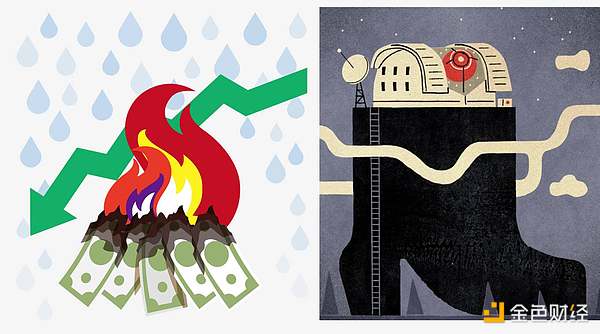
Following the product operation logic of the Internet industry, modern scientific research activities can be divided into three major components, and the human and material resources consumed by each part vary greatly:
① Backend: The infrastructure that supports the operation of the scientific research system in the background, including the construction and daily maintenance of laboratories and supporting resources. For example, the annual electricity bill for a laboratory building can reach hundreds of millions of yuan (especially when it is equipped with supercomputers with energy consumption comparable to mining), and the value of the instruments in a laboratory can reach hundreds of millions of yuan (especially for disciplines such as experimental physics and chemistry that are based on instrument operation). This process is the most expensive part.
② Middle-end: This is the part that can be copied and migrated. The disciplines in various fields around the world are basically the same. It is mainly "paper work", which can also be called "scientific research for Office software and printers". Researchers spend more than half of their time and energy on writing fund applications, fund assessments and project completion reports, otherwise there will be a lack of funds to support the development of back-end experiments. This process is the most time-consuming part.

③ Front-end: Publishing/communication/application of scientific research results with copyright, which is also the part of scientific research activities that the public usually comes into contact with under the exposure light. The output of the front end, whether it is papers related to theory and experiment, or technical patents, may bring direct or indirect benefits to society and researchers. This process is the part that can earn the most fame and fortune.
The above traditional centralized scientific research method is guided by the National Natural Science Foundation (NSF). Researchers generally write fund applications at the beginning of the year and annual assessment reports or project completion reports at the end of the year. They spend several months dealing with applications or assessments (mid-term). The review committee responsible for reviewing fund applications and project completion is composed of researchers with a certain reputation in the same field, that is, the best in the industry. The approval rate of fund applications is very low. The success rate of NSF applications in China is only about 20% (2021), and the success rate of NSF applications in the United States is 28% (2022). Therefore, for young scholars, "winning the book (i.e., fund)" is as happy as Fan Jin winning the imperial examination.
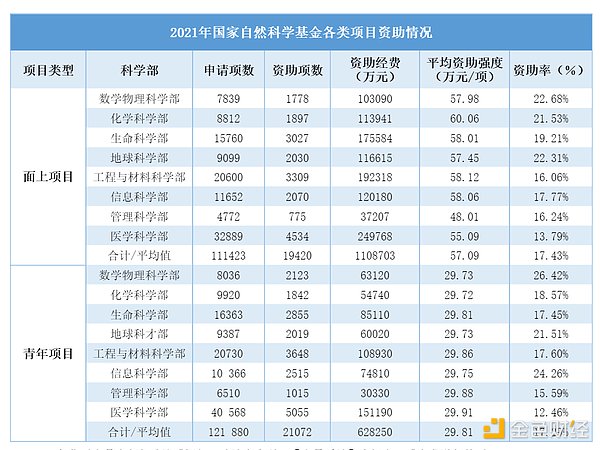
Source: https://fund.cingta.com/.
In order to pass the review smoothly, researchers usually apply for funds after they have the resources (backend). For example, when applying, they have actually completed part of the project, so the application written will appear sophisticated and mature. In this way, the review experts will think that the funds will not be wasted and there will definitely be results. This ultimately leads to two not-so-optimistic trends: the first is the decline in risk preference for scientific research, the exploration direction is conservative, and the blind pursuit of hot spots, and no one studies niche or unconventional directions; the second is the Matthew effect, where funds are gradually concentrated on academic authorities (commonly known as academic cliques), and it is difficult for fledgling or unknown researchers to get sufficient funds, and academic authorities are both athletes and referees in fund allocation.
Beheading is counted as military merit, and there are many greedy people
In the final assessment of centralized scientific research projects, the academic review committee mainly examines the papers or patents that have been published in academic journals (generally technical patents are also accompanied by articles for introduction or publicity). Therefore, for scientific researchers, publishing papers has become a rigid need. Problems of reproducing experimental results (others cannot repeat the original author's experimental results based on the article) and academic fraud are emerging in an endless stream. This is because some scientific researchers will whitewash the results and cover up defects in order to publish papers as soon as possible. The evaluation of a scientific researcher's reputation is also based on published papers, such as the number of citations of the paper.
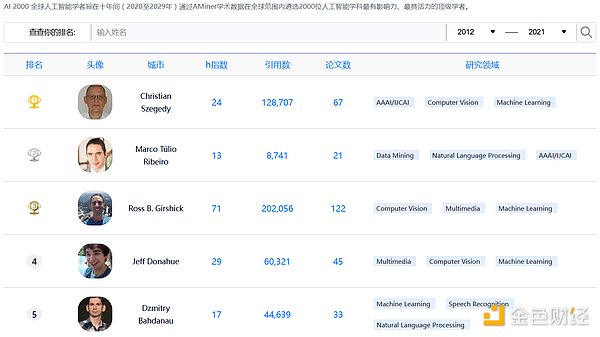
Source: https://www.aminer.cn/
The process of publishing a paper may be as tortuous as the experiment itself. After the painstaking experiment results, researchers organize the data into a draft paper, and then spend several months or even more than a year to publish the results in a journal (semi-monthly or monthly) for the public. The reason for spending so much time is that there may be errors in the draft paper that the author has not considered, which requires peer review in the field, that is, reviewers to make suggestions and revise and improve.
The platforms for publishing the results of natural science research are mainly publishers under the Elsevier and Springer groups. Considering that few people would pick up an academic journal when getting on a plane or waiting for a bus to read those unfamiliar professional terms and difficult academic writing styles (Heavy Academic Style), the subscription volume of academic journals is very small. In order to make a profit, publishers need to charge authors a certain fee.
If the author does not pay the fee, the reader will have to pay a certain fee to subscribe. Usually, each article costs tens of dollars or euros to obtain the PDF electronic version of the article (CNKI earns more RMB). In order to respond to the Open Access movement and allow readers to obtain electronic versions for free through the Internet, many journals need to charge open source fees. For example, the famous journal Nature requires authors to pay more than 10,000 US dollars, and Nature Communications requires authors to pay more than 5,000 US dollars.
Here we have to mention the Sci-Hub website. The founder, Alexandra Asanovna Elbakyan, used hacking technology and exploited the database loopholes where the papers were stored to steal a large number of papers from various publishers and make them all public, so that everyone can search and download them for free. After this battle, Elbakyan became famous all over the world. The journal Nature listed Elbakyan as one of the top ten scientific figures of 2016. Elbakyan was also sued by the publisher. However, the lawsuit was dropped. In addition to the fact that the US court could not prosecute Elbakyan who was hiding in Russia, the deeper reason is also easy to understand:
> Those who steal the fire from heaven to illuminate the world are forgiven by God.
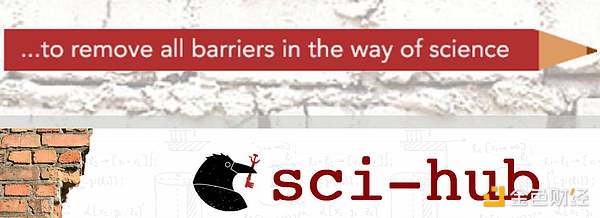
Whether an article is open access or not, the author does not receive any manuscript fee, and the reviewer does not receive any payment. Reviewers are free labor during the months of paper review, because reviewers are generally specially invited by the editor of the journal (usually also experts in the field), and are a symbol of reputation in the academic circle. If peers are interested in the research in the paper, they generally will not refuse the invitation to review it. You can refer to Li Bai's reaction when he saw Cui Hao's poem "Yellow Crane Tower". The number of reviewers is generally 2-5. Sometimes the author will recommend a few "favorite" reviewers, but the editor may not consider the experts in the same field recommended by the author, but will look for experts who match the research field of the paper to review it separately. This match is often unsatisfactory. Bias and poor communication are common problems in the review process.
People's ownership, people's governance, people's enjoyment
In summary, in the context of increasingly reduced funding (reduced government fiscal revenue and environmental protection reasons), there is a lot of redundancy and internal friction in the middle and front-end processes of centralized scientific research, and even waste the lives of scientific researchers. In response to the above-mentioned shortcomings of the middle and front ends, the DeSci movement aims to use blockchain-based "Web3" technology to encourage scientific researchers to conduct open and transparent research, solve the pain points and bottlenecks of centralized scientific research, and expand and disseminate human shared knowledge[4].
The DeSci movement is part of the citizen science and open science movements. Under the premise of protecting privacy and legal activities, it can even be applied to the back-end of scientific research, that is, the experimental part. In May 2021, the journal Nature published an article titled "Smartphone science: apps test and track infectious diseases", which mentioned that smartphones are gradually playing an important role in modern scientific research, such as mobilizing community volunteers to use mobile phone camera functions and App applications to track diseases caused by mosquitoes[5] and mark people infected with the new coronavirus[6]. Researchers used the camera function of their mobile phones to produce experimental results similar to those of a $50,000 fluorescence microscope, but the cost was less than $40[7]. Both Web2 and Web3 technologies shine in the DeSci movement.
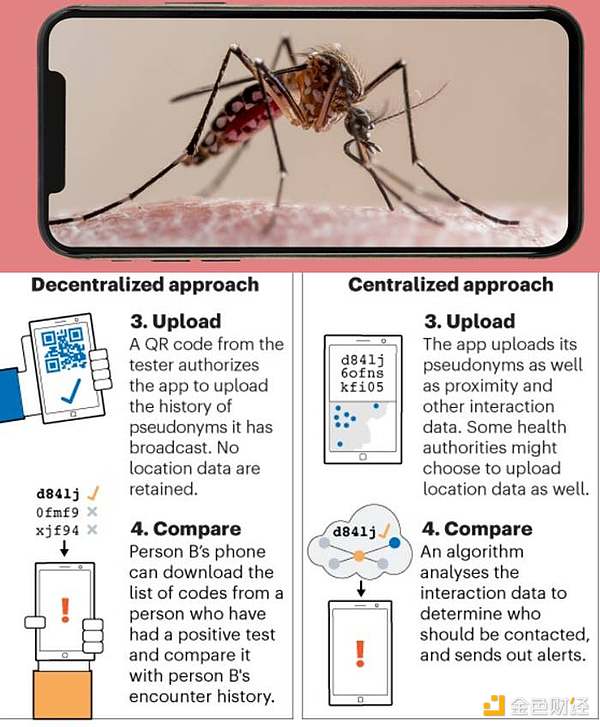
The community volunteers who launched the scientific research activities are actually decentralized autonomous organizations (DAO). In the DeSci movement, there should be the spirit of citizen science/open science and DAO: open data, open source results, transparent process, public support, cost sharing, and benefit sharing. The infrastructure that supports these DAO spirits is Web3 technology.

Source: https://www.azquotes.com/
2. What are the technical means adopted by the DeSci movement?
The DeSci movement mainly relies on Web 3.0 based on Ethereum (ETH). For example:
① Tokenization of digital assets. There are two modes. The first one is relatively simple, which is to convert scientific research results into non-fungible tokens (NFTs), through which researchers can directly obtain economic benefits. For example, the first NFT made from a scientific manuscript was sold at a high price of 13 ETH (about 24,000 US dollars) on the OpenSea website[8]. However, this high price may not be the norm, and NFT income is not enough to cover scientific research expenses.
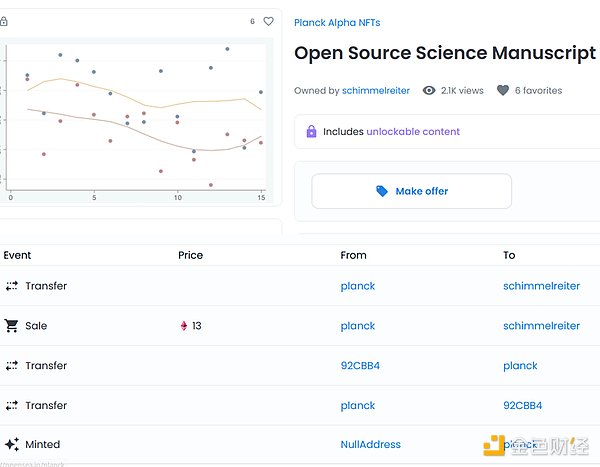
The second method is more complicated and is similar to real estate securitization. It crowdfunds research funds through DAO. DAO issues tokens based on community voting and multi-signature review by the treasury. Members who own DAO tokens jointly own the copyright of research results. For example, VitaDAO[9] issues tokens VITA to fund the research and development of rare diseases that lack funding or no one is researching.
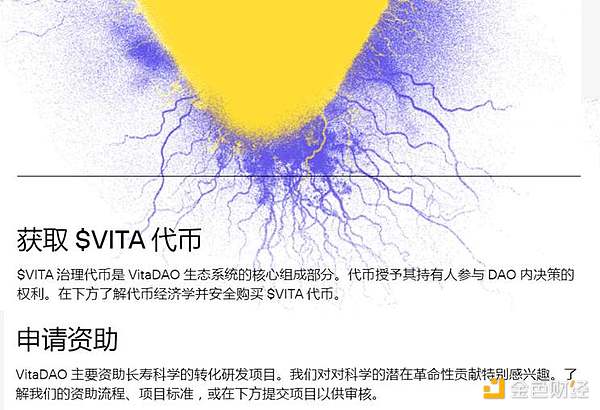
② Efficient peer-to-peer data storage (IPFS) technology. The reason why researchers publish their results on centralized platforms and may have to pay a certain fee is that the data and results are stored on the server and hosted by the platform, and the platform provides a web portal for others to obtain and share. IPFS is a peer-to-peer hypermedia protocol that converts files into blocks encrypted with hash values. A slight difference of one byte in the file content will result in a different hash value for its block [10]. These blocks are scattered across various network nodes and can be retrieved from the Web2 portal. When indexing a file, the IPFS protocol downloads the blocks associated with the file from different nodes.
③ Using decentralized finance (DeFi) technology, a scientific research incentive system is established through on-chain verification methods such as timestamps and proof of work. For example, the Ants-Review project transfers the peer review process to the chain. Authors anonymously publish drafts of scientific research results on the Ethereum chain and submit review tasks and rewards. Reviewers upload their comments and suggestions to the Ethereum chain, and the entire community evaluates the peer review results and pays proportionally according to the quality of their evaluation [11]. In addition, there are also peer review processes that are not based on token incentives, such as using reputation systems and IPFS to transfer the review process to the chain. Here, for reviewers, the incentive mechanism is the reputation score that the community gives to reviewers on the chain, which is constantly updated, rather than tokens [12]. IPFS is used to store and share different versions of papers from the first draft to the final publication, as well as peer review reports throughout the process.
The application of reputation systems in Web2 is not unfamiliar, for example, using the information interaction characteristics of the Internet to quantify the reputation of merchants in the process of serving customers. Many centralized e-commerce platforms, such as Dianping, Taobao, and Amazon, will set a constantly updated rating for merchants. Consumers rate from different perspectives, such as product quality, logistics delivery speed, etc. However, these ratings have false five-star reviews, that is, the "score brushing" phenomenon, and a complete industrial chain has been formed. Merchants will also use coupons and other means to induce customers to give good reviews. Not only are there frauds in ratings, but merchants also falsify sales, transaction orders, and transaction amounts.
When Web3 technology is applied to the reputation system, timestamp verification, on-chain recording of professional achievements, and non-saleable and non-transferable NFTs make it very costly to falsify these ratings. The signature and authorization of the on-chain wallet also reduce the risk of personal data leakage. In June 2022, the MetisDAO Foundation announced the launch of the Web3-based Reputation Power System [13]. Reputation power refers to portable and composable ratings obtained through on-chain achievements. Reputation power is obtained by participating in and contributing to DAO governance by performing operations such as deploying smart contracts, outputting content, minting NFTs, and voting.
A sound reputation system and a corresponding DAO governance system are crucial to the successful achievement of the ideal goal of DeSci. Because personal reputation plays the role of a trust certificate in the use of funds raised by the DAO, it may directly determine voting rights and review rights. Therefore, the DeSci movement based on Web3 technology will inevitably encounter a series of trust issues. There are many scientists who fight for truth or fame and fortune. Scientific research is not about treating people to a meal and being friendly. Of course, it is not about making a movie, where everyone is Wang Jie's return. Source: Movie "Detective Chinatown" 3. What are the areas that the DeSci movement has not covered? Some of the problems that the DeSci movement wants to solve may not be problems in themselves. Just like the chef Fan in the sketch "Selling Crutch": How come he became lame while walking? How did you go from riding a bicycle to using crutches?
Unite the United Front and make more friends
After entering the 21st century, the world's political and economic situation has made rapid progress. For example, China's accession to the WTO and the United States' quantitative easing have directly led to a blowout development of scientific research projects and funds. The output of fund projects and papers (and the export of international students) in China and the United States have increased by orders of magnitude. When a small problem grows by an order of magnitude, it will become a major problem that cannot be ignored, seriously affecting the survival and development of the academic community. In order to solve the chronic diseases and drawbacks mentioned above, centralized bureaucratic organizations must also rise to a higher dimension, otherwise they will not be able to cope with the ever-changing challenges.
Therefore, the reformists in the academic community launched a new round of open science movement, mainly including open access to papers, open data and open source software movements. The open science of the new century is mainly based on the open source Web2 centralized platform. For example, researchers can host their paper drafts as preprints on the ArXiv website, which runs on the server of Cornell University in the United States. The advantage of the preprint method is that it does not need to go through the time-consuming and laborious peer review process, and directly publishes research results, spreading scientific discoveries at the fastest speed. This has played a key role after the outbreak of the new crown pneumonia epidemic. Of course, the hidden benefit is that researchers can be the first to claim sovereignty over new discoveries, just like the colonists who rushed to plant flags in the Age of Exploration.

Source: The movie "Pirates of the Caribbean: On Stranger Tides"
Open source code, software, and data can be hosted on websites such as GitHub. Although document sharing and version control are the areas that benefit the most from blockchain technology, GitHub still has incomparable advantages in teamwork in writing code, documents, retaining different versions, and sharing results. In particular, the interface is very friendly to programmers, and the code can be read directly through the web page. If a package or document is on GitHub and thousands of people give it a star rating, then the original author has a very high reputation and proof of professional ability.
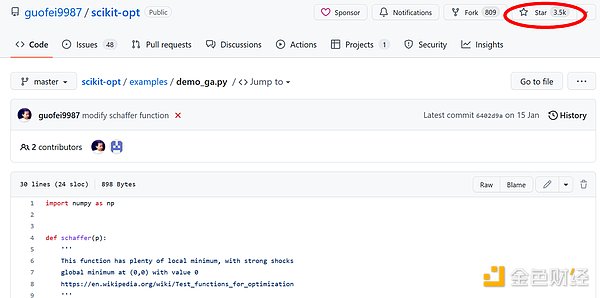
Source: https://github.com/guofei9987
Open source operating systems include Linux, Unix, etc., and open source software includes Open Office, Blender, QGIS, etc. In Google's open source programmer Colab, you can compile code directly on the web page without installing programming software, and save the code and documents on the cloud drive.
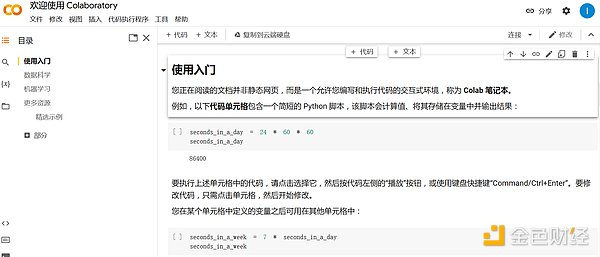
Therefore, in the past decade or so, open science itself has gained the participation of a large number of people in the academic community. As a revolutionary party, the DeSci movement needs to prove that its solutions are much stronger than the reformists within the centralized bureaucratic organization. Researchers who have participated in the open science wave will be the main force of the DeSci revolutionary movement in the future, but the DeSci movement does not seem to consider how to absorb these people to participate.
Your chain, my chain, are everyone's chain
Another problem is the revolutionary program of the DeSci movement - blockchain itself. Although the blockchain technology represented by Bitcoin and Ethereum uses a distributed ledger with a timestamp to represent the transfer of value, the theory and technical means began after Satoshi Nakamoto invented Bitcoin in 2009, but the idea has been popular in natural science for hundreds of years. The citation relationship between documents can be traced back to the original paper, just as the transaction records of Bitcoin can be traced back to the genesis block. The journal Nature has sorted out 88,000 papers published by the journal from 1900 to 2017. These documents contain nearly 700 million citation relationships. If other papers cite a certain paper, then a connection is generated between them, as shown in the figure below. In the figure, the dots represent papers, the colors represent disciplines, and the size of the dots represents the number of citations [14]. These more than 80,000 papers are just a drop in the ocean of scientific literature. The literature citation system of natural science that has lasted for hundreds of years is a network of multiple blockchains interwoven with timestamps and value transfer records.

Although anonymity is the strength of blockchain, researchers attach great importance to works with real names. Basic disciplines such as mathematics and physics are scientific research fields with a strong sense of personal heroism. No one can resist the ultimate temptation of naming a theorem after their own name. For example, the famous "L'Hôpital's Rule" is that the noble L'Hôpital (Marquis) gave the genius mathematician John Bernoulli 300 livres (equivalent to 136 kilograms of silver) every year to fund his research in exchange for the naming rights of this major mathematical research result, thus going down in history.
Therefore, the biggest reviewer and the first review of a paper is always the author himself. Although the application of the DeSci movement in peer review is worth promoting, is there any need for the peer review system itself to continue to exist?
Nowadays, everyone can publish their ideas on blogs and video websites, and the way of communicating and spreading knowledge is instant and interactive. On the basis of open data and transparent results, there should be no articles rejected for publication in this world. The people who make suggestions for revisions to a paper should not be just a few people, but everyone who can see the paper, and the author has the greatest execution power over the paper and can modify the content of the article according to the suggestions. The application of the DeSci movement in peer review is a solution to redundant market needs.
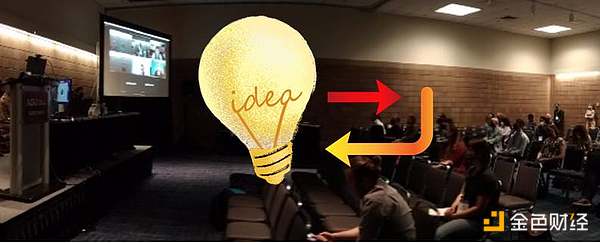
Source: https://cryptohayes.medium.com/
Haste makes waste
Sometimes slow is good, slow is valuable. The efficiency brought by Web3 technology is not always the optimal solution. There are scientific research results that take ten years to sharpen a sword. Even if DeSci can reduce the direct cost of scientific research to zero one day in the future, Communication (expression, communication, exchange) will always be the biggest cost. The acquisition of scientific knowledge is very simple and the cost is very low, but the cost of digestion and absorption is very high. The human brain is more complex and difficult to understand than the universe. Einstein and the Copenhagen School argued for 30 years. The collision of the universe of thought sparked the development of physics theory in a nuclear explosion. A straight line is the shortest distance, but a winding route is more valuable.

Source: https://www.agu.org/
Avoid repeating the same mistakes
Currently, a number of DAO funds have emerged in the DeSci movement to fund scientific research, such as the OceanDAO Foundation that funds oceanographic research[15], the Molecule Foundation that funds biomedical research[16], and the VitaDAO Foundation[9]. Their operating model is to raise funds through DAO, but they have not gotten rid of the process of "submitting an application - approving the project - obtaining funding". Apart from saving time, they have not brought about any fundamental changes in the model. Since this model is too similar to the epic of traditional centralized scientific research, the author will not list the reasoning and proof, but simply give a conclusion here:
> As long as there is approval, there will be centralization.
4. What is the possible future development direction of the DeSci movement?
Before victory, consider defeat
During the Warring States Period, although most of the 3,000 retainers raised by Mengchangjun were just eating and drinking, some retainers could indeed play a decisive role at the critical moment of life and death, such as Feng Xuan, a peerless national scholar, and the likes of Ji Ming and Gou Dao.
Just as Christianity will never lack donations and the big monks in the temples will always have a lot of money for incense, scientific research is also one of the means to maintain the stability of rule and social harmony, that is, it is utilitarian and also ornamental. 90% of academic achievements are repetitive and redundant research, which is neither original nor has theoretical or applied value. However, 10% of high-level scientific research can get a lot of funding without the DeSci movement.
From the design of the top structure of society, scientific research is an activity with a high failure rate. Although the academic community has a strict hierarchy, it is also very tolerant of failed research.
Even in the research institutes or R&D centers within some commercial companies, the cycle of researching a technology may be tortuous and long. For example, it took Huawei 10 years to make a breakthrough in 5G algorithms by hiring foreign engineers with high salaries; the new drug development cycle of some biopharmaceutical companies can reach more than 20 years; most of the funds of the three major artificial intelligence research centers of Google, Microsoft, and Baidu have also been wasted, but the academic contribution of Google Artificial Intelligence Research Institute is already comparable to the academic community in the ivory tower.
In the current DeSci movement, no problem of tolerance for failure has been found. In Huawei, Ren Zhengfei can give his unconditional support, even if he has failed many times. However, in the voting of the DAO organization, there may be a phenomenon of "collective dementia". This may be an area where the DeSci movement needs to be improved and optimized in the future.
Breakthrough at the edge
If the revolutionary movement can succeed, it must break through from the edge, that is, "surrounding the city with the countryside". In niche areas that are not funded by the government or companies and are not very profitable, the DeSci movement may shine.
In the field of applied science with a high degree of commercialization, such as the field of computer information technology, the degree of open source is the highest, so it is relatively easy to obtain data and code (some core codes are not open source due to profit issues). Although IPFS technology can store and share data in a decentralized manner, in some experimental fields, the data itself is very valuable, and it often takes a huge amount of manpower and material resources to obtain it, and there are certain technical barriers, so the possibility of public disclosure is very small. Moreover, sometimes the communication and sharing of information between researchers is restricted by the political power of the state. Scientific knowledge can be made public for free, but modern scientific research is based on technology, which has thresholds and moats. There are many technical patents or achievements that cannot be made public.
DeSci should focus on empowering researchers rather than focusing only on the blockchain tool itself. Blockchain technology is not well known to the majority of researchers, and many people don’t even know how to use ETH wallets. During the 1927 Revolution, the Northern Expedition was successful, partly because the Hanyang rifles were widely equipped by the Northern Expedition Army. Of course, the leaders of the Northern Expedition were eventually bought by the chaebol. The conservatism and weakness of the researchers themselves may also limit the development and growth of the DeSci movement. In addition, the current encrypted wallets are almost irrecoverable after being lost. Therefore, it is necessary to strengthen the infrastructure construction of wallet security.
"If you don't encounter the tangled roots, how can you distinguish the sharp weapons?"
The overall funding amount of the DeSci movement may eventually account for a small proportion, but as an alternative to traditional scientific research, DeSci is expected to become Feng Xuan's "three burrows for the cunning rabbit", and strive for the greatest support for scientific research activities.
When natural science was first born, the funding came from the church, the king or the nobles, and it has never been independent and decentralized. The tangled scientific research traditions and interest groups stand in the way of the universal values of Web3. I hope that these historical inertias can be broken by the DeSci movement.
If not, it is expected that there will be no regrets, and history will continue to select the next challenger to enter the arena.
 Catherine
Catherine




















